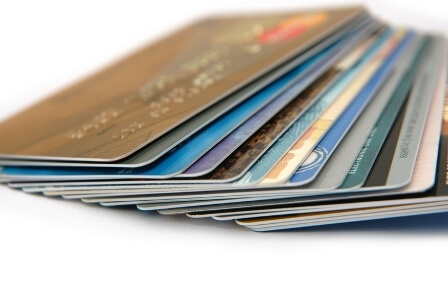Digital Payments Juice Credit Card Usage While Helping to Avoid Risk
by Sarah Schmidt
June 1, 2017
While outstanding consumer credit card loans are on the rise, growth within the consumer payments industry remains relatively subdued, especially in comparison to automobile and student loan growth rates, suggesting that consumers continue to approach card debt conservatively, according to the Packaged Facts report U.S. Consumer Payments Outlook Through 2020, now available for sale.
During 2012-2016, revolving consumer credit outstanding (comprised largely of credit card loans) grew at 3.5% annual rate, in line with market-based personal consumption expenditures.
Why The Conservative Approach to Card Debt
This conservatism in the consumer payments market has been shaped by post-recession credit card portfolios, which, by and large, no longer include subprime borrowers. Putting this in perspective, a net $263 billion was cleaved from consumer subprime borrowers’ credit card lines from 2007-2015, translating to healthier, i.e. less risky, credit card portfolios. While a few credit card issuers have begun to widen their risk parameters, consumers within the payments card market generally remain cautious, resulting in a pool of cardholders more apt to pay off their balances than revolve them (or at least to revolve large amounts of credit outstanding).
But credit card interest rates—always much higher than those for other consumer loans—must look excessively painful to consumers so used to low interest rates across virtually every consumer loan type. Credit card users can tap a plethora of 0% balance transfers and delayed payments options to avoid that pain. More broadly, even subprime borrowers can walk into an automobile dealership and obtain a no-interest loan on a new car. Why revolve card debt?
Credit card loan payment value tells a different story: During 2012-2016, general-purpose consumer credit card payment value (the value generated by consumer credit cards, not business credit cards) grew at a 7.4% annual rate during 2012-2016, more than twice the growth rate of loans outstanding. This occurred even while active credit card usage penetration (monthly usage) remains below levels seen prior to the Great Recession.
Maintaining less risky card portfolios means that growing the population of credit card users within the payments market becomes more difficult. For credit card issuers, the general strategy must rely instead on stealing share, getting more cards into the wallets of higher-quality existing users, and getting them to use their cards more frequently and for a broader variety of purchases. Credit worthy, high-spending affluent consumers are naturally in the competitive crosshairs.

The Credit Card Payments Industry into 2020
Through 2020, Packaged Facts expects the competitive consumer payments industry to only intensify, forecasting active credit card usage penetration to grow between 1.4% and 1.6% annually through 2020. The consumer payments' market growth will need to come from increased usage frequency.
This underscores the importance to payments market participants of the strong, continuing migration among consumers away from cash and check toward card-based and electronic payment options. With this migration comes billions of new card-based transactions made by consumers who already use payment cards—they simply use them more often for more types of purchases.
Helping to drive this migration, the industry's digital payments trend provides a special bonus for credit cards. While payment cards generally enjoy a strong position as consumers' digital payment options, credit card users disproportionately prefer credit cards to transact online. The confluence of digital payments with longer-term consumer payment choice trends, as well as a preference for credit cards in the digital realm bodes well for future growth, translating to a boost in transaction volume that does not require credit card companies to fish for a riskier pool of cardholders—a win-win for the consumer payments industry.
Where to Find U.S. Consumer Payments Outlook Through 2020 and Free White Paper
Purchase Packaged Facts' U.S. Consumer Payments Outlook Through 2020 report today by visiting: https://www.packagedfacts.com/Consumer-Payments-Outlook-10827875.
Packaged Facts is also offering a free white paper available here.
-- by David Morris, market research analyst
Have unique research needs?
Freedonia Custom Research listens intently to your needs and objectives. Then we work diligently to define and deliver a service to meet them.Subscribe to Our Blog
Stay up to date with the latest information about new market research and news in areas relevant to your business from our analysts and team members.Packaged Facts Blog Subscription
Provide the following details to subscribe.